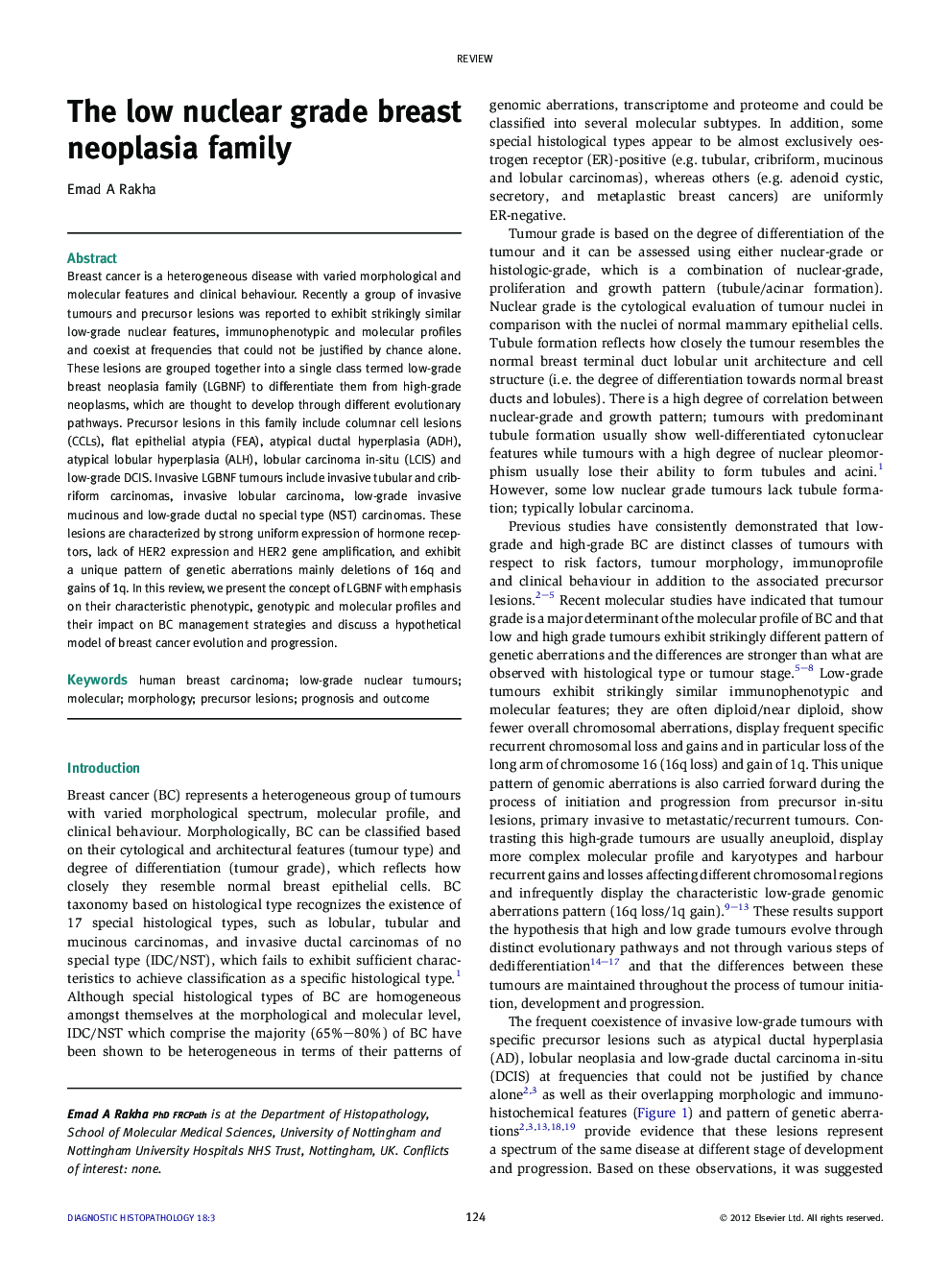| Article ID | Journal | Published Year | Pages | File Type |
|---|---|---|---|---|
| 4131376 | Diagnostic Histopathology | 2012 | 9 Pages |
Breast cancer is a heterogeneous disease with varied morphological and molecular features and clinical behaviour. Recently a group of invasive tumours and precursor lesions was reported to exhibit strikingly similar low-grade nuclear features, immunophenotypic and molecular profiles and coexist at frequencies that could not be justified by chance alone. These lesions are grouped together into a single class termed low-grade breast neoplasia family (LGBNF) to differentiate them from high-grade neoplasms, which are thought to develop through different evolutionary pathways. Precursor lesions in this family include columnar cell lesions (CCLs), flat epithelial atypia (FEA), atypical ductal hyperplasia (ADH), atypical lobular hyperplasia (ALH), lobular carcinoma in-situ (LCIS) and low-grade DCIS. Invasive LGBNF tumours include invasive tubular and cribriform carcinomas, invasive lobular carcinoma, low-grade invasive mucinous and low-grade ductal no special type (NST) carcinomas. These lesions are characterized by strong uniform expression of hormone receptors, lack of HER2 expression and HER2 gene amplification, and exhibit a unique pattern of genetic aberrations mainly deletions of 16q and gains of 1q. In this review, we present the concept of LGBNF with emphasis on their characteristic phenotypic, genotypic and molecular profiles and their impact on BC management strategies and discuss a hypothetical model of breast cancer evolution and progression.
